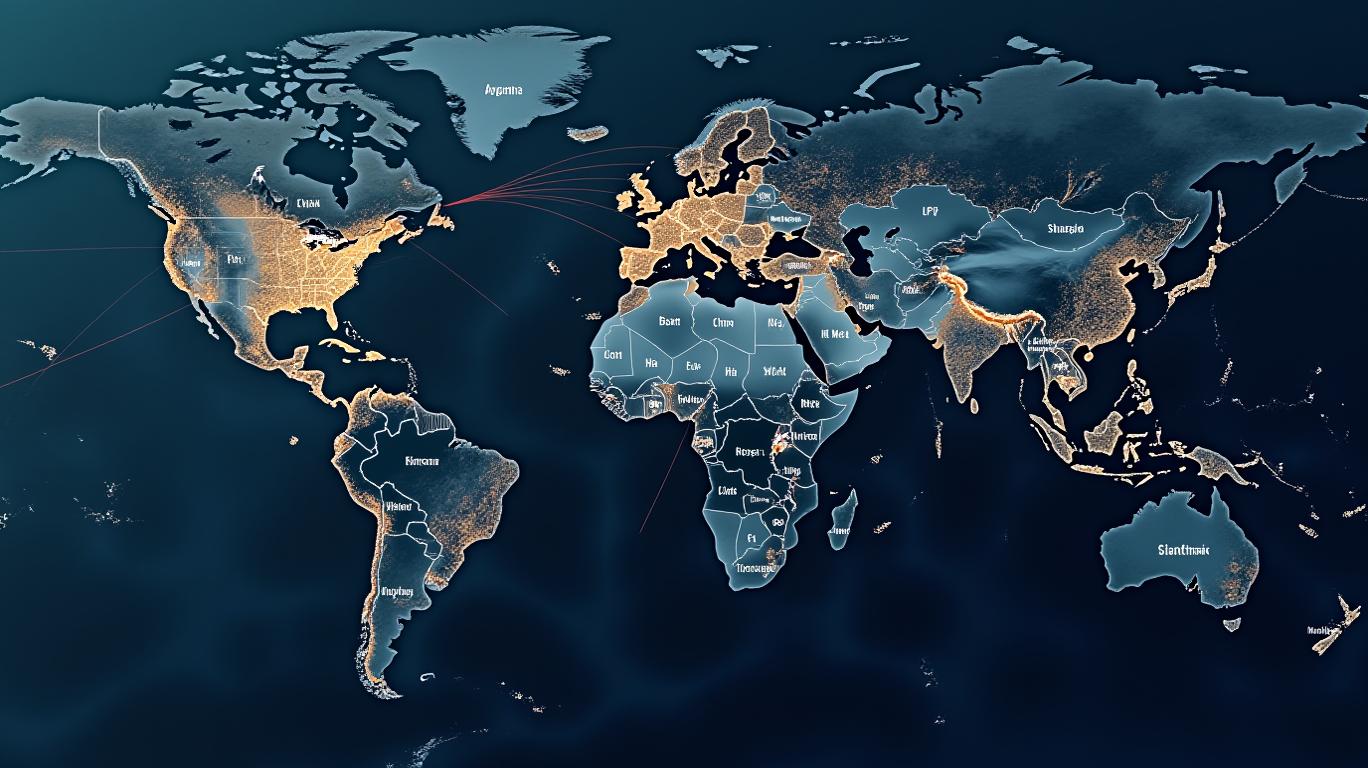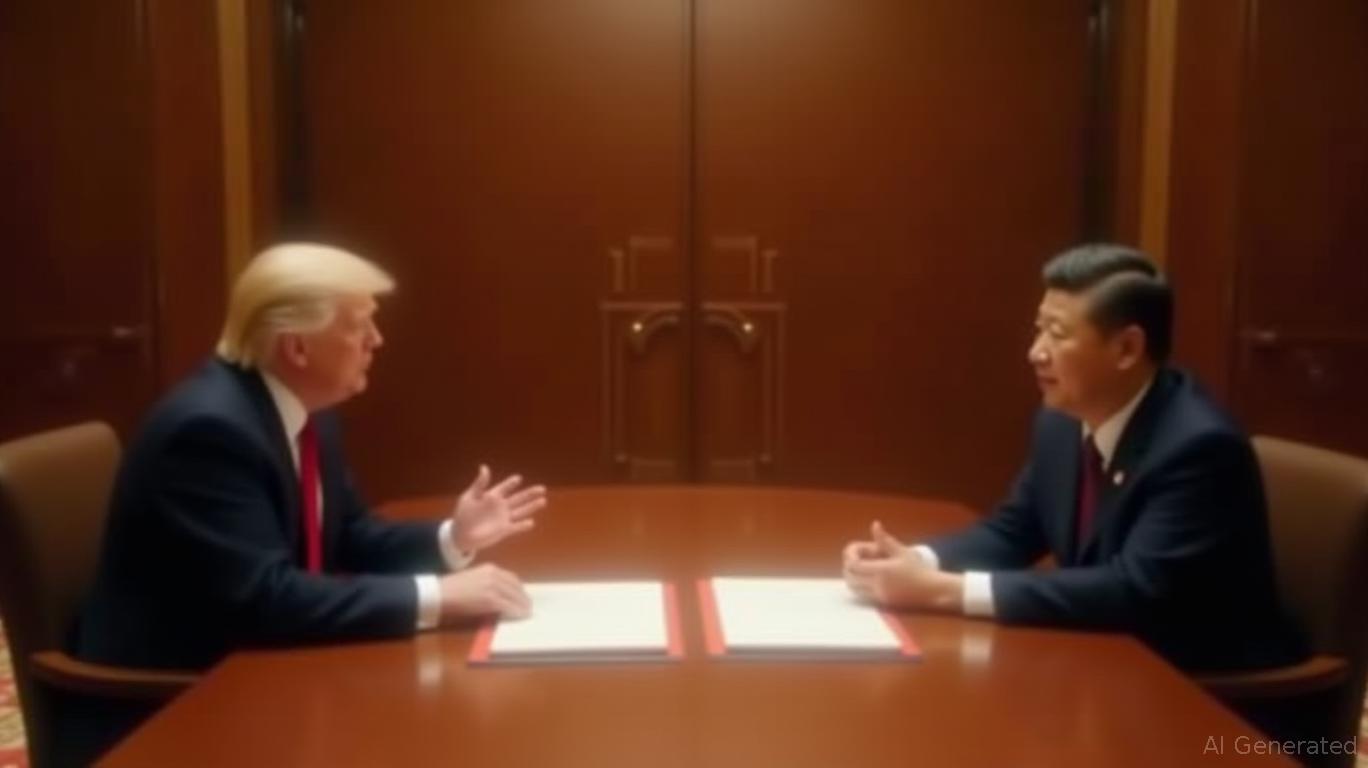The World's Trade Superhighway: Navigating the Storm of US-China Decoupling
The global trade landscape in 2025 is a theater of high-stakes conflict. Once the bedrock of economic interdependence, the U.S.-China trade relationship has devolved into a fragmented battleground of tariffs, sanctions, and supply chain disruptions. The consequences are clear: strained global supply chains, rising inflation, and a race to decouple that risks leaving investors stranded in a fractured economic ecosystem.
The Tariff Tsunami and Its Ripple Effects
The trade war has escalated far beyond rhetoric. By 2025, punitive tariffs now sit at 145% on U.S. imports from China and 125% reciprocally, effectively acting as an “embargo,” per U.S. Treasury officials. These measures have slashed container traffic between the two nations by 30%, with shipping giants like Hapag-Lloyd and Kuehne + Nagel drastically reducing trans-Pacific routes.  .
.
The economic toll is staggering. Oxford Economics estimates that U.S. GDP could lose 1.4% annually under current policies—a loss exceeding $300 billion. Meanwhile, inflationary pressures persist as companies absorb higher costs or pass them to consumers. reveal a 40% decline, reflecting the sector’s vulnerability to trade tensions.
Tech Rivalry: A New Cold War in Innovation
Decoupling isn’t just about goods—it’s a battle for technological dominance. U.S. export controls on advanced semiconductors and AI chips have inadvertently accelerated China’s self-reliance. Startups like DeepSeek now rival U.S. AI giants, offering comparable models at 30-40% lower costs. Meanwhile, the CHIPS and Science Act’s $52 billion investment in domestic semiconductor production highlights a shift to industrial policy, but it may come too late.
The semiconductor sector exemplifies the paradox: U.S. bans on sales to Chinese firms like Huawei have spurred China to invest $150 billion in domestic chip production.
Geopolitical Tightrope: When Trade Wars Risk Hot Wars
History warns against underestimating the risks. The U.S. oil embargo on Japan in 1941 preceded Pearl Harbor, a cautionary parallel to today’s tensions. While China holds $760 billion in U.S. Treasuries and remains the second-largest U.S. export market, financial ties alone can’t insulate against strategic miscalculations.
The TikTok ban review and semiconductor tariff exemptions for Taiwan underscore the volatility. Investors must weigh the geopolitical stakes: a full decoupling could destabilize global supply chains, while ongoing friction prolongs uncertainty.
Investment Strategies for a Fractured World
The path forward demands a nuanced approach. Investors should:
- Diversify Supply Chains: Look to companies building alternatives to Chinese manufacturing, such as Vietnam-focused firms (e.g., PVH Corp, which sources apparel there).
- Bet on Tech Leverage: Semiconductor firms with advanced nodes (e.g., ASML, which supplies critical equipment) or AI companies with cost-efficient models (e.g., Alphabet’s DeepMind) may thrive in a fragmented market.
- Monitor Geopolitical Catalysts: The WTO’s stalled dispute mechanisms and U.S.-China trade talks could trigger volatility, offering entry or exit points.
Conclusion: The Cost of Division, the Need for Balance
The U.S.-China trade war has already cost the global economy dearly. With GDP losses mounting and innovation ecosystems fracturing, the stakes are existential. Yet, the interdependence remains undeniable: China still accounts for 13.5% of U.S. imports, and its green tech exports—solar panels, EV batteries—now outpace U.S. competitors by 25%.
Investors must navigate this paradox: capitalizing on decoupling trends while hedging against systemic risks. Those who focus on agility—whether in supply chains, technology, or geopolitical exposure—will likely weather the storm. The trade superhighway may be strained, but its fate hinges on whether nations can rebuild bridges before the fractures become irreversible.
The data is clear: the cost of division is too high to ignore.


_442a2dcc1749832873286.jpeg)
_e68fac6d1749831664430.jpeg)






